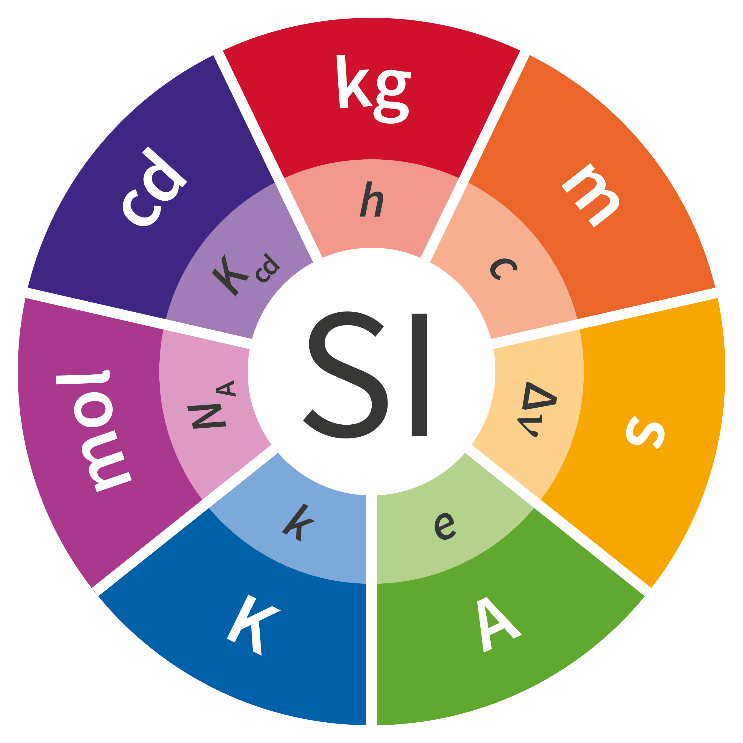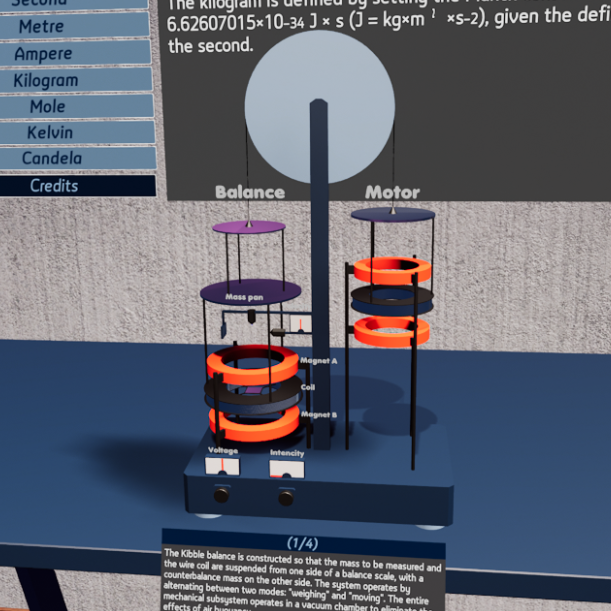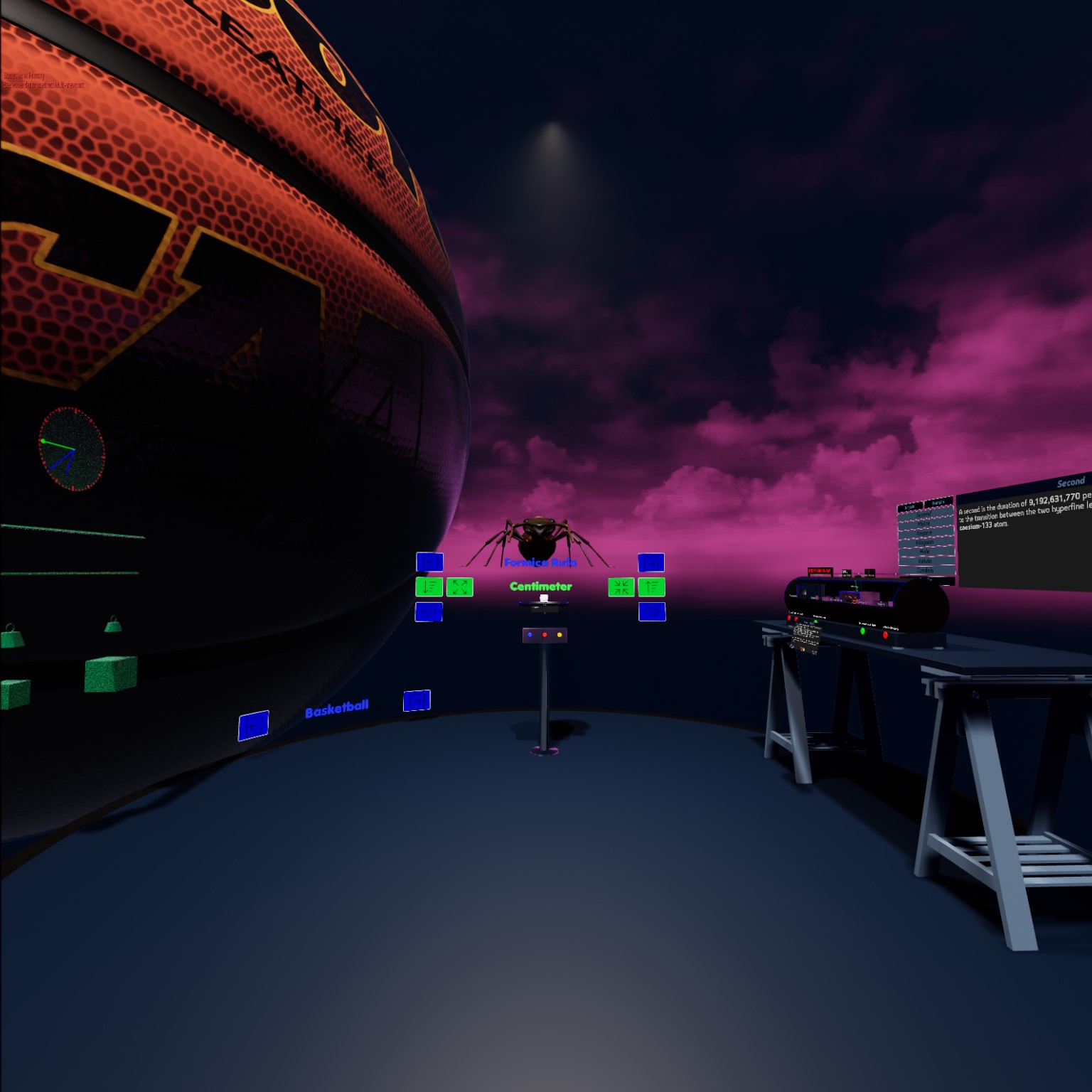
(UE 5.3),
our application is an alpha version, a mock-up, but it works!
What's a Meter? a Kilogram? a Second? ... This is where the VR metrology begins with :
System of Units is an Open Source and Free VR application made for you to understand the seven fundamental units in physics, and more...
Ampere, Candela, Kelvin, Kilo, Meter, Mole, Second were "definitely" redefined in 2019 to use universal constants as references. Discover the link between these units and nature.
The Kibble balance is used to define the Kilogram.
Have fun with our simulator and travel from the infinitely small to the infinitely large by zooming in powers of ten.
This application uses Unreal Engine 5.3 as game engine.
Get it here : https://www.unrealengine.com/en-US/download
Get it here : https://git-scm.com/download/win
Using your terminal create a project folder in your workspace and use Git to download System of Units' sources:
mkdir SystemOfUnits
cd SystemOfUnits
git init
git remote add github https://github.com/pierre-auguste/system-of-units.git
git pull github master
Launch "SystemOfUnits" application and let Unreal Engine compile the sources. Enjoy !
Bon courage !



